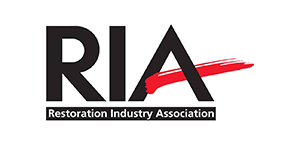Water intrusion in your home can lead to severe consequences, impacting both the structural integrity and health of your property. Understanding the risks involved and effective prevention and solution methods is crucial for any homeowner to maintain a healthy and structurally sound home. What happens if water gets in your walls? Continue reading to find out.
Key Takeaways
- Water intrusion can weaken the foundation and structural materials of your home.
- Mold growth caused by water in your walls can lead to respiratory problems and allergic reactions in individuals living in the affected space.
- Decreased energy efficiency can occur due to insulation damage, leading to increased energy bills.
- Taking preventive measures, such as conducting regular inspections and implementing waterproofing strategies, is vital in avoiding the consequences of water in your walls.
- If water has already infiltrated your walls, seeking professional assistance and implementing proactive solutions is necessary
How Does Water Get in Your Walls?
Water intrusion can cause severe damage to your home if left unchecked. Understanding how water infiltrates your walls is crucial in preventing costly repairs and maintaining the structural integrity of your property.
The causes of water intrusion are varied and include leaks from plumbing, roof, or foundation issues. Often, the signs of water damage inside your walls can go unnoticed. Look for common signs of water damage such as water stains, peeling paint or wallpaper, and warped walls or ceilings. These are indications that water has infiltrated your walls, and prompt action is necessary to prevent further damage.
One of the most common sources of water intrusion is through your roof. Water can seep through missing or damaged shingles, cracks in roof flashing, or holes in the roof. Damaged plumbing, such as broken pipes or leaky fixtures, can also cause water to infiltrate your walls.
It’s crucial to act quickly when you notice any signs of water damage inside your walls. Delay will only exacerbate the problem and lead to more severe damage to your home. Addressing the underlying causes of water intrusion and repairing any damage is the key to preventing costly repairs and ensuring the structural integrity of your home.
| Causes of Water Intrusion | Common Signs of Water Damage |
|---|---|
| Roof leaks | Water stains on walls or ceilings |
| Plumbing issues | Peeling paint or wallpaper |
| Foundation issues | Warped walls or ceilings |
Regular inspections of your home can help prevent water intrusion and detect any signs of damage early on. Addressing these issues promptly will help protect your home and ensure a safe and healthy living environment.
- Check your roof regularly for any damages or leaks
- Inspect your plumbing for any leaks or broken pipes
- Monitor the humidity levels in your home and use a dehumidifier to prevent mold growth
- Take care of your landscape to prevent water from accumulating and seeping into your foundation
By understanding the common causes of water intrusion and the signs of damage, you can take proactive steps to prevent costly repairs and maintain the structural integrity of your home.
Structural Damage Caused by Water in Walls
When water seeps into your walls, it can lead to severe structural damage. Prolonged water exposure weakens the foundation, causing it to crumble and shift. In addition, moisture promotes the growth of rot that can eat away at wood, further compromising the integrity of your home. If left unchecked, these issues can lead to warped materials that cannot support their own weight, causing your walls to collapse.
Furthermore, water intrusion can lead to mold growth in hidden areas that can multiply and spread quickly, endangering the health of anyone living in the affected space. Mold can eat away at drywall and wood, causing more structural damage and putting your family at risk of respiratory problems and allergic reactions.
It is vital to address water intrusion as soon as possible to avoid these severe consequences. Encapsulating the affected area, drying out all moisture, and removing any compromised materials is a complex process that often requires professional help. Taking these steps will not only protect your home but also keep your family safe.
Health Risks Associated with Water Intrusion
Water that seeps into your walls can have severe consequences on not just your home’s structural integrity but also on your health. One of the significant risks posed by water intrusion is the growth of mold spores. The presence of moisture offers the perfect environment for the fungus to thrive. Mold spores can trigger respiratory problems and allergic reactions in individuals living in the affected space, such as coughing, wheezing, and nasal congestion.
It’s best to deal with water intrusion promptly to prevent mold growth and its associated health risks. If you notice water damage or suspect that your home has mold growth, contact a professional to assess the situation and provide appropriate solutions.
Protect yourself and your loved ones by taking action against water intrusion and the potential for mold growth.
Decreased Energy Efficiency
Water intrusion not only puts your home’s structure and your family’s health at risk, but it can also impact your wallet. Moisture penetrating your walls can cause insulation damage, resulting in higher energy bills due to the loss or gain of heat. Don’t let water intrusion drain your budget.
The table below demonstrates how insulation damage can affect your energy bills. These numbers are not exact and vary depending on your particular situation, but they provide a general idea of the impact of water intrusion on your wallet.
| Insulation Intact | Insulation Damage | |
|---|---|---|
| Electricity Bill | $150 | $195 |
| Gas Bill | $75 | $105 |
As you can see, even the smallest amount of insulation damage can add up to a significant increase in your monthly energy bills. It’s essential to address water intrusion as soon as possible to avoid further damage and keep your bills under control.
Preventing Water Intrusion in Walls
Taking care of your home’s maintenance is the first step in preventing water intrusion in your walls. Regular inspections and timely repairs are key to avoiding costly issues in the long run. Here are some practical tips:
| Maintenance | Waterproofing | Regular Inspections |
|---|---|---|
| Check roof for leaks and repair as needed | Apply waterproof coatings to exterior walls | Schedule annual inspections by a professional |
| Monitor plumbing lines for leaks and address quickly | Ensure proper drainage away from the foundation | Regularly look for signs of water damage inside your walls |
| Clean gutters and downspouts regularly | Install waterproof membranes during construction or renovations | Consider installing a moisture detection system |
Waterproofing is another crucial step in preventing water intrusion in your walls. Seal all cracks and gaps in your home’s exterior, including around doors, windows, and vents. Use waterproof coatings on exterior walls, and consider installing waterproof membranes during construction or renovations.
Regular inspections should also be conducted to catch any potential issues early on. Schedule annual inspections by a professional, and regularly monitor plumbing lines and the roof for leaks. It’s also essential to look for any signs of water damage inside your walls, such as water stains or peeling paint.
By following these practical tips for maintenance, waterproofing, and regular inspections, you can prevent water intrusion in your walls and avoid the costly consequences that come with it.
Solutions for Water Intrusion in Walls
If you’ve discovered water in your walls, it’s important to act quickly to avoid further damage. There are a number of repair options to consider depending on the severity of the issue. Sealing techniques can be effective for preventing future water intrusion.
For minor leaks, you may be able to fix the issue yourself with some basic tools and materials. This can include patching small holes or cracks and replacing damaged caulking. However, for more significant water damage, it’s best to seek professional assistance to ensure proper repair and restoration. Look for a reputable contractor with experience in repairing water damage.
Sealing techniques can also be effective for preventing water intrusion in the future. This can include applying a waterproof coating or membrane to the exterior of your home, as well as inspecting and repairing any damaged areas in your roof or foundation.
Regular inspections and maintenance can also go a long way in preventing water intrusion. Make sure to keep your gutters and downspouts clear of debris, as clogs can cause water to overflow and seep into your walls. Additionally, keep an eye out for any signs of water damage, such as peeling paint or bulging walls, and address them promptly.
Conclusion
Now that you understand the consequences of water intrusion in your walls, it’s important to take action to protect your home. Make sure to conduct regular inspections and implement proper waterproofing strategies to prevent water from infiltrating your walls. In the event that water does make its way in, address the issue promptly with professional assistance and effective sealing techniques.
By taking these steps, you can mitigate the risks of structural damage, health hazards, and decreased energy efficiency. Protecting your home from water intrusion is essential for maintaining a safe and healthy living environment.
FAQ
What are the consequences of water intrusion in your walls?
Water intrusion in your walls can lead to structural damage, including weakened foundations, rotting wood, mold growth, and warped materials. It can also pose health risks, such as respiratory problems and allergic reactions. Additionally, water intrusion can decrease energy efficiency and result in higher energy bills.
How does water get in your walls?
Water can enter your walls through various common sources, including leaks from plumbing systems, roof issues, and problems with your home’s foundation. Signs of water damage, such as damp spots, peeling paint, or a musty odor, indicate water infiltration.
What are the health risks associated with water intrusion in walls?
Water intrusion can contribute to the growth of mold spores, which can lead to respiratory problems and allergic reactions in individuals living in the affected space. Mold spores in the air can cause irritation and trigger respiratory issues, particularly in people with allergies or asthma.
How does water intrusion affect energy efficiency?
Water intrusion can damage insulation in your walls, reducing its effectiveness and compromising the energy efficiency of your home. This can result in heat loss or gain, leading to increased energy bills.
How can you prevent water intrusion in walls?
Preventing water intrusion involves regular maintenance, implementing waterproofing strategies, and conducting regular inspections. It’s important to ensure proper drainage around your home, repair any leaks promptly, and seal any cracks or gaps in your walls.
What are the solutions for water intrusion in walls?
If water has already infiltrated your walls, there are several solutions available. These include repairing any underlying issues, such as plumbing or roof leaks, implementing sealing techniques to prevent further water intrusion, and seeking professional assistance to address more extensive damage.
























